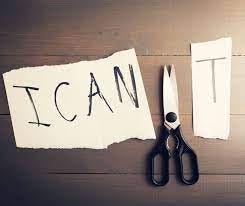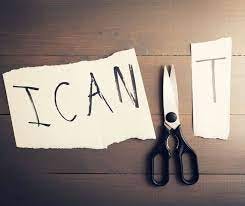Belief Before Progress: Why Self-Efficacy Is a Game-Changer for Learning
Hattie's Visible Learning Effect Size Series – #9 Self-Efficacy – Effect Size 0.92
To note: John Hattie’s Visible Learning research brings together over 1,500 meta-analyses covering more than 90,000 studies. His goal is simple but ambitious: to identify what works best in improving student outcomes. This blog is part of a 20-post series unpacking the most effective influences, backed by effect size data and grounded in practical, classroom-ready strategies.
There are few forces more powerful in the classroom than a student who believes they can learn. And few things are more limiting than one who doesn’t. With an effect size of 0.92, self-efficacy sits among the most impactful influences on student achievement. But it’s not just about confidence. It’s about the belief, built through experience, that effort leads to progress and that challenges can be overcome. You can have a beautifully sequenced curriculum and clear learning goals, but if a student believes they can’t do it, none of it lands.
What Is Self-Efficacy?
Self-efficacy, coined by psychologist Albert Bandura, refers to a student’s belief in their ability to succeed in a specific task. It’s not about general confidence or self-esteem. A learner might feel capable of writing a science report but freeze when analysing a poem. Another might thrive in one classroom culture but not in another.
That’s because self-efficacy is task-specific and context-sensitive. It’s shaped by past experiences, feedback, peer examples, and the environment around them. And the good news? It’s something we can influence every day.
Why It Matters
Self-efficacy plays a central role in how students behave as learners:
Those with strong efficacy are more likely to try, persist, reflect, and improve.
Those with low efficacy often disengage, avoid challenge, and misread feedback as personal failure.
Belief drives behaviour. And over time, behaviour shapes outcomes. Hattie’s research shows that self-efficacy is not just an effect of learning — it’s a cause of it. It shapes whether students activate learning strategies, manage emotions during struggle, and believe feedback applies to them.
What Teachers Can Do: Practical Strategies
Building self-efficacy doesn’t come from hype or hollow praise. It comes from helping students experience success and see the link between their effort and their progress.
Set Clear, Specific Goals - Avoid broad phrases like “do your best” or “improve your writing.” Instead, break the task down: “Use three varied sentence types to build rhythm.” Clear goals help students feel the target is attainable.
Celebrate Progress Over Perfection - When we only praise final outcomes, we reinforce the idea that some students are naturally “good” and others aren’t. Instead, spotlight what changed:
“Your conclusion is much stronger now, adding that counterargument helped you explain your thinking more clearly.”Model Mistakes and Revision - When we show the messy, nonlinear nature of learning, we normalise the struggle. Students begin to understand that success is not about instant mastery but about refinement and persistence.
Use Peer Modelling to Share What’s Possible - Highlight progress from a variety of students, not just high achievers. Let the class hear how someone improved, what they changed, and how they approached the task differently.
Prompt Reflective Thinking - Ask students to look back at their own growth.
“What used to feel hard but now feels easier?”
“What did you change to get better at this?”
These reflections help them own their journey.
Quick Wins for This Week
Exit Tickets - Use an exit ticket that asks, “What helped you feel more confident in your learning today?”
Annotations - Ask students to annotate an old piece of work, highlighting what they’d improve now
Success Stories - Share one story of visible improvement, and what caused it, with the whole class
Challenges and Cautions
Not every student believes they can succeed, especially those with a history of difficulty or negative feedback. For them, building self-efficacy takes more than encouragement. It requires:
Consistent, visible progress
Structured reflection
Feedback that connects effort to outcome
Avoid vague praise like “You’re great at this!”; it can feel hollow. Instead, focus on what’s improving and why: “You added transitions between paragraphs, that’s what made this easier to follow.”
Reflections
If a student isn’t putting in effort, it’s tempting to label them disengaged. But ask yourself, is there a belief underneath that behaviour? When students don’t believe they can, they often choose not to try.
As you reflect, consider:
Which of your students needs help recognising their progress?
Are any of your current systems (marking, grouping, reward structures) unintentionally undermining self-efficacy?
Are you giving students the tools and space to notice their own growth?
And from a leadership perspective:
Do your professional development sessions model and value growth for staff in the same way we ask of our students?
Does your assessment policy reinforce task clarity and feedback that builds belief?
Try This
Ask students: “What’s something you used to find hard but now feels easier?” Then build on their responses by discussing how that change happened and what it tells us about effort, strategy, and belief.
Further Reading and Resources
Helping Students Believe in Themselves – Edutopia
https://www.edutopia.org/article/helping-students-believe-themselvesReflecting on Self-Efficacy – Class Teaching - A reflective piece discussing the importance of self-efficacy in education and how teachers can support its development.
https://classteaching.wordpress.com/2022/02/11/reflecting-on-self-efficacy/
Research Connections
Bandura, A. (1997) – Self-Efficacy: The Exercise of Control
Hattie, J. (2009) – Visible Learning
Schunk & Pajares (2002) – The Development of Academic Self-Efficacy
Visible Learning Blog Series
Self-Efficacy (0.92) – Belief before progress (You are here)
Teacher Credibility
Micro-Teaching
Classroom Discussion
Interventions for Learning Disabled Students
Teacher-Student Relationships
Spaced vs Massed Practice
Meta-Cognitive Strategies
Acceleration
Classroom Management
Vocabulary Programs
Repeated Reading Programs
Next up: Teacher Credibility - exploring how students' perceptions of our competence, care, and consistency shape their willingness to learn from us and engage with challenge.




